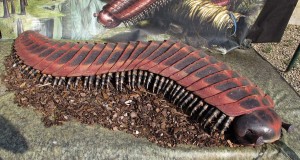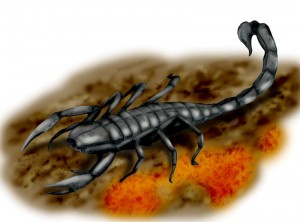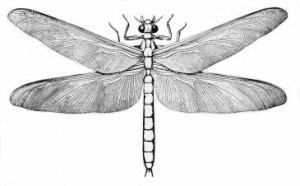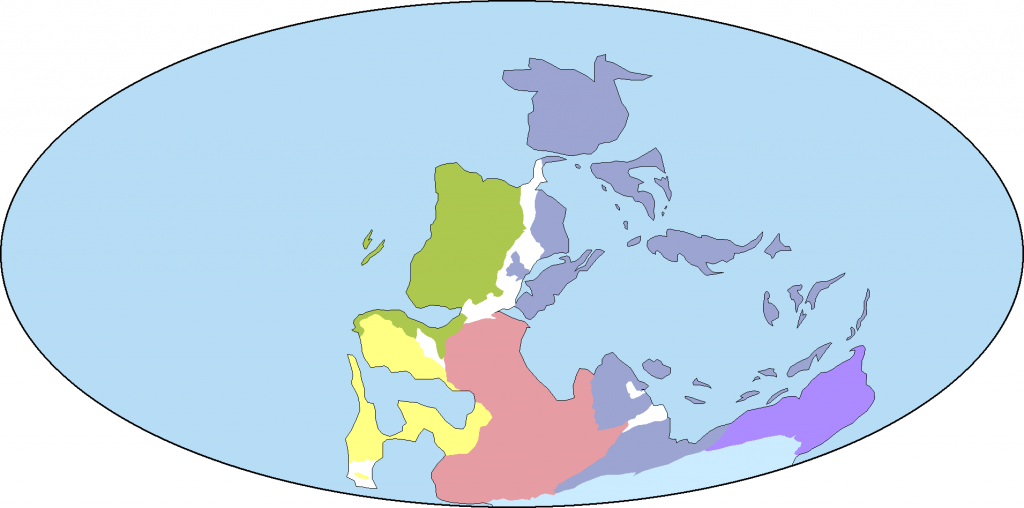石炭纪 Carboniferous
构造特征
The Carboniferous was a time of active mountain-building, as the supercontinent Pangaea came together.
石炭纪是一个造山运动活跃的时期,比如超级泛大陆聚在了一起。
The southern continents remained tied together in the supercontinent Gondwana, which collided with North America–Europe (Laurussia) along the present line of eastern North America.
南部大洲仍旧和超大陆冈瓦纳连结在一起,并且与沿着北美东部本线的北美—欧洲(劳伦西亚大陆)相碰撞。
This continental collision resulted in the Hercynian orogeny in Europe, and the Alleghenian orogeny in North America; it also extended the newly uplifted Appalachians southwestward as the Ouachita Mountains.
这次大陆相碰撞直接导致在欧洲的海西运动和在北美的阿勒格尼亚的造山运动;它也扩展了新隆起的阿巴拉锲亚西南,成为沃希托山。
In the same time frame, much of present eastern Eurasian plate welded itself to Europe along the line of the Ural mountains.
与此同时,许多的欧亚板块将它们自身联结到欧洲的乌拉尔山脉。
Most of the Mesozoic supercontinent of Pangea was now assembled, although North China (which would collide in the Latest Carboniferous), and South China continents were still separated from Laurasia. The Late Carboniferous Pangaea was shaped like an “O”.
大部分诞生于中生代的泛大陆中的大陆部分聚集在了一起,尽管华北和华南板块仍旧和劳亚古大陆分离。石炭纪晚期的泛大陆形状就像字母“O”。
气候特征
Average global temperatures in the Early Carboniferous Period were high: approximately 20 °C (68 °F). However, cooling during the Middle Carboniferous reduced average global temperatures to about 12 °C (54 °F).
早石炭纪全球平均气温较高:大约20摄氏度。经过中石炭纪的降温,全球平均气温降为12摄氏度。Glaciations in Gondwana, triggered by Gondwana’s southward movement, continued into the Permian and because of the lack of clear markers and breaks, the deposits of this glacial period are often referred to as Permo-Carboniferous in age.
冈瓦纳大陆上的冰川随着大陆向南运动,持续到二叠纪。由于中间没有明显标志或间断,这一冰期的沉积物被划分入石炭—二叠期。
The thicker atmosphere and stronger coriolis effect due to Earth’s faster rotation (a day lasted for 22.4 hours in early Carboniferous) created significantly stronger winds than today.
较厚的大气层与地球迅速自转(早石炭纪时一天约22.4小时)带来的巨大的科里奥利力作用,使得那时的风比现在强劲得多。
The cooling and drying of the climate led to the Carboniferous Rainforest Collapse (CRC). Tropical rainforests fragmented and then were eventually devastated by climate change.
气候变得寒冷与干燥,导致了石炭纪雨林的破坏。热带雨林带破碎、规模缩小,最后由于气候变化彻底消失。
生物特征
【巨虫时代】陆生生物飞跃发展,海生无脊椎动物也有所更新。蜓类是海生无脊椎动物中最重要的类群,而腕足动物尽管在类群上减少,但数量多,依旧占相当重要地位,头足类则以菊石迅速发展为主。


石炭纪晚期,脊椎动物演化史出现一次飞跃,从此摆脱了对水的依赖,以适应更加广阔的生态领域,以北美宾夕法尼亚早期地层中的林蜥为代表。生活在陆上的昆虫,如蟑螂类和蜻蜓类,是石炭纪突然崛起的一类陆生动物,它们的出现与当时茂盛森林密切相关,其中有些蜻蜓个体巨大,两翅张开大者可达70cm。

两栖动物占到了统治地位。早石炭世一开始,两栖动物蓬勃发展,主要出现了坚头类(也称迷齿类),同时繁盛的还有壳椎类。石炭纪植物世界大繁盛。晚石炭世除了节蕨类和石松类外,真蕨类和种子蕨类也开始迅速发展。裸子植物中的苛达树是一种高大的乔木,成为造煤的重要材料之一。形成大规模的森林和沼泽。


Caboniferous(石炭纪)是巨虫时代,那些蜈蚣、马陆有John Deer的轻型拖拉机一样大!